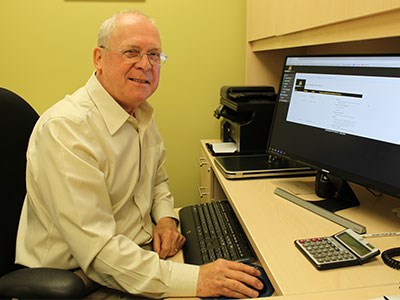When Bob Ryckman started in the construction industry four decades ago, there often wasn’t much precedent for safety monitoring amongst companies, so he created his own, pioneering the use of spreadsheets and databases to track safety records.
SafetyLynx, an online program devised by Ryckman and tweaked over the last 20 years, is a repository of all his knowledge. It allows employers to track the safety-related minutiae of a company: training logs, accident reports, employees’ emergency contact information and more.
“It’s been building by necessity, building because I’ve bumped into something and I couldn’t handle it,” said Ryckman, who’s based out of the Sault Ste. Marie Innovation Centre. “Each time I needed to handle information, I had to program something because manual was just not going to work.”
Built into the program, which is aimed at small to medium-sized businesses that don’t have the resources for large safety departments, are multiple checks and balances to make employees and employers more accountable.
The training module keeps track of training by individual and notifies management three months in advance when a training renewal is looming. Employers can schedule training, and records are kept by employer, employee, program, provider, dates and expiry dates.
The investigation module helps users conduct thorough investigations into safety incidents, identify causes and implement corrective actions.
There’s a statistics module, which tracks accidents and incidents on a monthly basis and provides summary reports by month and year, and the library houses forms, reports, alerts, inspection reports and other documents.
Users can even track unexpected events like refusal of safe work, work stoppage or Ministry of Labour inspections and look up the required procedure.
All this is stored using cloud technology so the program doesn’t take up room on a company’s computers. Users can log on and access the program from anywhere.
“Anyone with any device that connects to the internet has the whole program at their fingertips, no matter where you are,” Ryckman said. “It’s great on a construction site, at any remote site, or if a guy’s working along up a telephone pole someplace: you’ve got the whole thing there.”
It also integrates well with the Certificate of Recognition program, an initiative of the Infrastructure Health & Safety Association (IHSA) that’s quickly becoming a prequalification requirement for many contractors across Canada.
There are similar programs on the market, but two key aspects of SafetyLynx distinguish it from competitors, Ryckman said, including the pricing model.
Rival companies typically charge by the user, so the more users who have passwords and access to the database, the more expensive it gets. Ryckman dislikes the idea of making the program exclusive to certain users.
“I want people to get information,” he said. “I want to get it in the hands of whoever you think should have it and not have to pay extra for it.”
The SafetyLynx configuration instead charges by the number of employees at a company. Pricing starts at $298 per month for a company with 50 employees. The price per employee goes down the more that are added.
SafetyLynx is also more intuitive and interactive. Competitors operate what Ryckman calls “an electronic file cabinet”: users upload their safety documents to the program, which generates reports and lets users search for specific documents.
But what about SMEs that don’t have documents already and need to start from scratch? Ryckman argues. His program guides users through the step-by-step process of creating those documents.
Ryckman said SafetyLynx, a “prettier, fancier and up-to-date” version of what he’s been working on for the bulk of his career, will evolve. He’s starting to market it to the construction industry, but believes in its use for other industries.
He’ll need to hire programmers at some point, and he already has a wish list of addenda for subsequent versions. But the program will still centre on the core principles of occupational safety — his legacy after four decades promoting safe work.
“There are three basic steps to safety: hazard identification, risk assessment, control; that’s safety in a nutshell,” Ryckman said. “Do those three steps and you’ve got it beat.”




